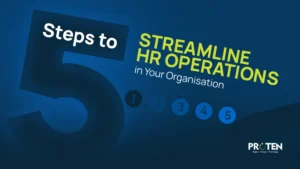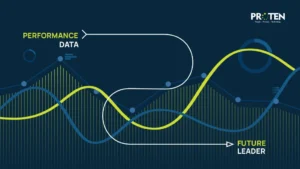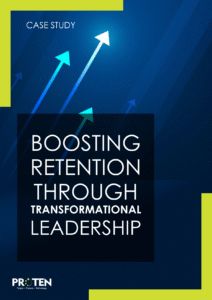If you’ve followed the trend of performance management over the years, you’ll notice that it’s not the same way it was before. As work evolves, organisations are shifting from traditional appraisals to more dynamic performance measurement and development methods.
But what does that look like in 2025? The short answer is smarter, human-focused, and more strategic.
In this blog, we’ll break down 10 game-changing performance management trends that are shaping the future of work. Whether you’re in HR, a team leader, or a business decision-maker, this is your roadmap to staying relevant and competitive.
1. Performance management is now tied to ROI
Consider this: if your performance management system doesn’t link to results, why are you even investing in it?
The top-performing companies in 2025 are tracking the ROI of their performance strategies, not just in productivity, but in retention, engagement, innovation velocity, and team resilience. They now ask tougher questions about feedback ROI, development plan follow-through, and goal alignment with measurable outcomes.
Want to understand how to actually measure performance ROI? Dive into our blog on how to measure the ROI of your performance management strategy. It breaks down what to track, how to analyze, and where most companies get it wrong.
Because performance isn’t just about output, it’s about value, and value must be measurable.
2. Skills are now defining performance instead of roles
Job titles no longer reflect the full scope of an employee’s impact because what truly matters is what a person can do, not just what their position is called. That’s why many companies are shifting toward not just skills-based hiring, but also performance tracking, building internal talent marketplaces, and identifying strengths across teams.
For example, someone might hold the title of Marketing Associate, but also be the key driver behind campaign strategy, trend research, or brand storytelling. If your performance system still relies on phrases like “exceeds expectations for role,” you are only seeing a fraction of the picture. The real indicators are adaptability, ongoing skill development, and the ability to take on new and complex challenges.
3. Feedback is becoming frequent
One-off feedback no longer drives meaningful growth, and while weekly check-ins are a step in the right direction, what is truly gaining ground in 2025 is contextual feedback that shows up exactly when and where it matters. When someone wraps up a major project, a prompt follows, and when a conflict comes up, there is space to reflect, share, and work through it in the moment.
This is not about control or micromanagement, but about being present and using technology to capture the real experiences that shape performance. People do not grow through vague praise but through specific and timely insight that helps them understand what to improve and how to move forward.
4. Well-being is now a performance metric
Smart companies are beginning to acknowledge the rise of employee burnout, and they’re acting on it as well. In 2025, performance platforms are starting to include wellbeing indicators to monitor burnout levels and protect their organisation against the risk of low employee engagement by looking out for burnout signs before it’s too late. You might see data points like recovery time after big pushes, emotional check-ins, or even energy level trends across teams.
Because the truth is that exhausted employees don’t perform, and resilient teams don’t just happen; they’re built, nurtured, and measured.
5. Employers are paying attention to context
Performance reviews have in the past overlooked unique circumstances surrounding an employee’s work, but now, context is becoming a non-negotiable layer in performance conversations. Leaders are beginning to consider the resources available for employees, the obstacles they faced, and whether the conditions matched their expectations, because evaluating performance in isolation no longer makes sense..
This doesn’t lower the bar but instead creates a fairer playing field for all employees. For instance, a sales rep who missed targets during a product shortage isn’t seen the same way as one who missed them in a booming market. Real performance management now looks at both outcome and environment, giving room for dynamic, equitable evaluations that actually drive better decisions.
6. Managers Are Finally Getting the Support They Deserve
Here’s something we don’t talk about enough: most managers were promoted for doing their jobs well, not for knowing how to manage people. And for years, we left them to figure it out alone, but that’s not happening anymore.
Now, diverse resources are offering real-time guidance to managers, like conversation starters and coaching tips. In fact, some alerts indicate when a team member hasn’t received feedback in a while.
It’s not hand-holding or scaffolding, it’s simply helping managers grow so that they, in turn, can help their teams grow too.
7. Goal setting is now collaborative
Goal setting is no longer up to the employers; employees now co-create them and align their personal growth with the team’s objective and the company’s big picture. This matters a lot because ownership drives commitment, and giving someone the go-ahead to set their own goals, with a manager as a guide, makes them chase these goals harder. And when things change as they always do, there’s room to adapt without losing momentum.
8. People are writing their own performance stories
Performance appraisals from managers aren’t the only thing evolving, as people are now self-evaluating. So, no more forms asking managers to rate an employee’s performance from 1-5. Instead, employees are curating live performance portfolios that include wins, insights, feedback they’ve acted on, and even lessons from failure. These narratives aren’t just more interesting, they’re also more real.
Plus, they give managers something richer to work with than just numbers, because now they can see the journey from the employee’s point of view.
9. Gamification is growing up
For a while, gamification had a bad reputation for superficial badges and meaningless points, but now companies are designing meaningful motivational systems like learning quests, development tiers, and recognition programs that are tied to real behavior change, not just vanity metrics.
This approach is especially effective with younger teams who grew up in digital environments where leveling up feels second nature, and when done right, gamification taps into a powerful mix of progress, purpose, and just the right amount of friendly competition.
10. Performance is now tied to change-readiness
In 2025, how quickly employees can shift gears has become just as important as the goals they’re hitting. It’s not enough to perform well under perfect conditions, as what now sets top performers apart is their ability to pivot quickly, adapt to change without losing momentum, and guide others through uncertainty.
More and more organizations are starting to measure this kind of change readiness, looking at how fast someone picks up a new process, embraces new tools, or takes initiative when things feel unclear. This is as a result of business conditions evolving faster than any KPI dashboard, and the real MVPs aren’t just meeting goals, they’re growing with the business.
So, what’s the big picture?
Performance management has evolved from a routine, checklist-driven function into a more observational and strategic role that focuses on understanding behavior, enabling growth, and aligning people with purpose in real time.
In this new era, it’s not just about measuring outputs, but about noticing patterns, identifying blockers, and creating the conditions for people to succeed. It requires curiosity, empathy, and a commitment to ongoing development, not just for employees, but for the systems that support them.
As the workplace continues to shift, the organisations that will thrive are those that treat performance management as an opportunity to elevate people, drive impact, and build cultures where high performance is both human and sustainable. Ready to elevate your performance strategy? Let’s have a real conversation about what works, what doesn’t, and how to fix it. Book a free consultation with us and start building a performance culture that performs.









